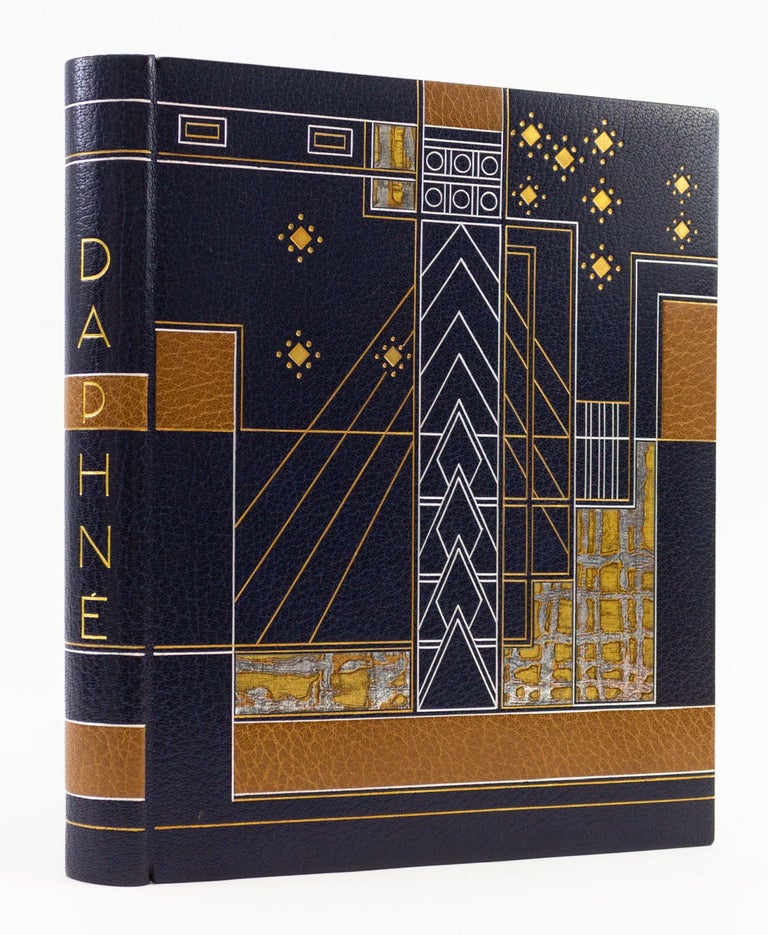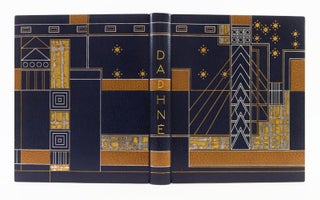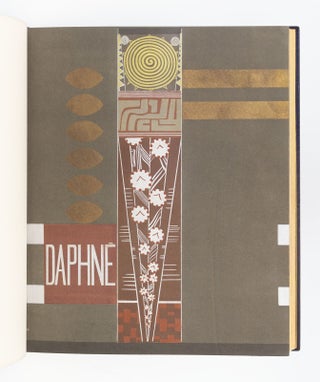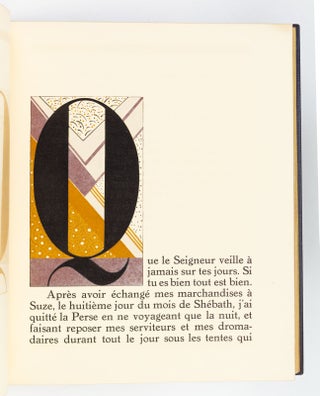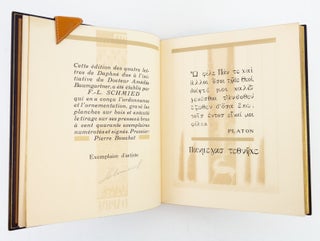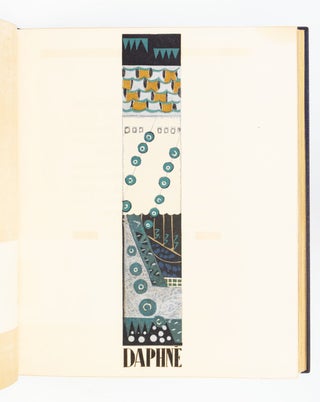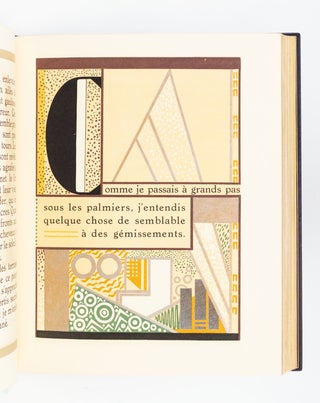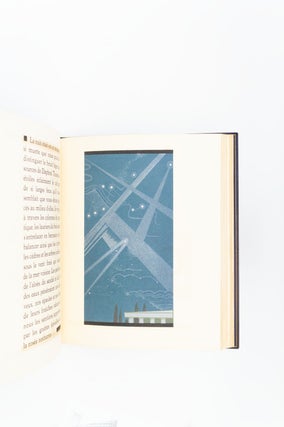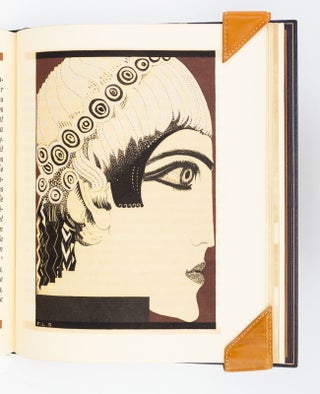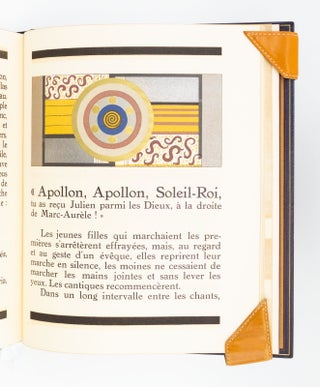DAPHNÉ.
(Paris: F. L. Schmied, 1924). 305 x 245 mm. (12 x 9 3/4"). [90] leaves. THE ARTIST'S OWN COPY ("Exemplaire d'artiste") SIGNED BY SCHMIED, from a total edition of 140 copies.
MAGNIFICENT MIDNIGHT BLUE CRUSHED MOROCCO BY DEVAUCHELLE (stamp-signed on front turn-in), INLAID AND GILT TO AN ART DECO DESIGN INSPIRED BY SCHMIED, covers with gold and silver geometric tooling, with metallic and tan morocco inlays, smooth spine with vertical titling, fawn-colored suede doublures and free endleaves edged with brown morocco, all edges gilt. Original illustrated paper wrappers bound in. Housed in the original matching morocco-backed chemise and slipcover. WITH 50 COMPOSITIONS ENGRAVED ON WOOD IN COLOR AND ENHANCED WITH SILVER AND GOLD BY FRANÇOIS-LOUIS SCHMIED. Nasti, "Schmied" B5, p. 116; Ray, "The Art Deco Book in France," p. 57-8. ◆A bit of offsetting from the illustrations, otherwise A PRISTINE COPY inside and out.
This is François-Louis Schmied's own copy of the book Ray deemed "the Art Deco book par excellence," in a splendid binding clearly inspired by his illustrations for the book. Written in 1837 but not published until 1912, this novel by the most philosophical of the French Romantic poets, Alfred de Vigny (1797-1863), examines the role of the artist in society by looking at the life of Julian the Apostate, a poet, soldier, and emperor of Rome. Here, it is greatly enhanced by the Art Deco illustrations and decorations of Schmied (1873-1941), one of the most important, original, and active figures in the world of artists' books. For many of his productions, Schmied took on the responsibility for creating the illustrations, designing the typeface and page layout, setting the type, and doing the printing. According to Ray, "Full of typographical audacities, ["Daphné"] is also remarkable for the ingenuity of design and the dark, rich colors of its ornamentation. . . . The brilliance and precision with which Schmied engraved and printed his designs are beyond praise." Schmied was immensely talented in all areas of book production, and as Duncan & De Bartha point out, this "versatility . . . has obscured the fact that he was also a highly gifted modernist designer." Schmied was born and studied in Geneva, moved to Paris at 22 to make a living as a wood engraver, and joined the French Foreign Legion in his mid-forties, losing an eye in the Great War. It was after 1919 that Schmied began to focus primarily on the production of "éditions de luxe," often entirely the work of his own hands, and in the mid-1920s, he and his eldest son, Théo, managed an atelier that issued a distinguished series of sumptuous works in very small editions, largely for members of elite French book clubs.
The work was bound by Roger Devauchelle (1915-93), who was apprenticed to a binder in Amiens at the age of 12. He later moved to Paris, where he went to work for the master craftsman Georges Lahaye, who introduced him to fine binding and helped him perfect his technique. Devauchelle served in the French army in World War II, was captured by the enemy, and escaped to join the Maquis resistance fighters in Landes. He returned to Paris after the war, and became one of the most lauded binders of his time, as well as the author of an authoritative history of French bookbindings. He produced a number of Schmied-inspired bindings (RBH locates 20) on works produced by Schmied and his son. (ST18249)
Price: $16,000.00

